Push-Pull Legs Superset Routine
The focus for many people who lift weights is to build strength, display separation between major muscle groups, and obtain balance between the front and back, and upper and lower regions of the body. This is certainly true for anyone wishing to step on stage and be judged, as well as those pursuing physical perfection, if only from an aesthetic view point.
Whilst areas like the chest, shoulders, back, and arms, can respond well to resistance training and therefore produce faster results, it is the legs that typically appear resistant to change (or growth). The legs (I’m speaking collectively about the quads and hamstrings, and whilst calves are usually included within this group, they are not the focus of this article), are comprised of large, powerful muscles that can withstand high demands and are in daily use carrying the rest of our weight around. A few heavy sets here and there aren’t going to result in the same growth and development as say, the same focus on the chest or arms might.
Simply put, if you want to see a change in leg development, you’re going to need to up the ante within your workouts, and possibly also the frequency at which you train them.
Simply put, if you want to see a change in leg development, you’re going to need to up the ante within your workouts, and possibly also the frequency at which you train them.
This routine below combines both the quads and hamstrings together in one workout. If you’re focus is to grow your legs, I would recommend performing this routine once a week as well as include some specific separate quad and hamstring work within other workouts.
The Warm Up
I’ve always found it beneficial to perform some prep work on the muscles and joints prior to lifting weights. This doesn’t mean just holding a few static stretches or spending time doing cardio first. This means focusing on the movements you’ll be taking the muscles through whilst under tension, as well as effectively warming up the muscle fibers and synovial fluid within the connecting joints. I’ve also found this to be beneficial towards getting in the right mindset for the workout ahead.
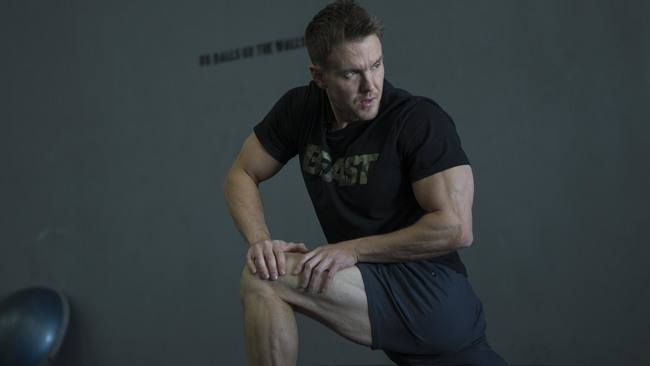
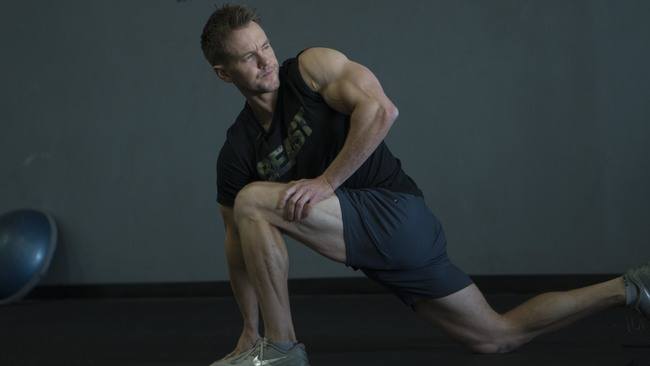
You’ll see the warm up routine that I go through within the video consists of some banded stretches, foam roller (self-myofascial release), and hip mobility. These are all beneficial to the exercises that will follow, as I’m not just trying to get blood into the muscle (which will happen during my warm up and working sets), but more so prepare the muscles and tendons for the range of motions that they’ll be going through.
For most of these movements, I am holding for two deep breaths. Inhaling through my nose, and as I exhale through my mouth, slowly pushing into to the stretch (or onto the foam roller), a little bit more. The goal here is not to stretch the muscle out as far as you can, but rather ease into a greater range of motion and open up some more flexibility within the muscles – especially around the hips, so that once you start with the movements, you’re not loading up the muscles with resistance and going straight into a working set.
Superset #1: Front Squat & Stiff-Legged Deadlift
4 Sets. 12 reps on each
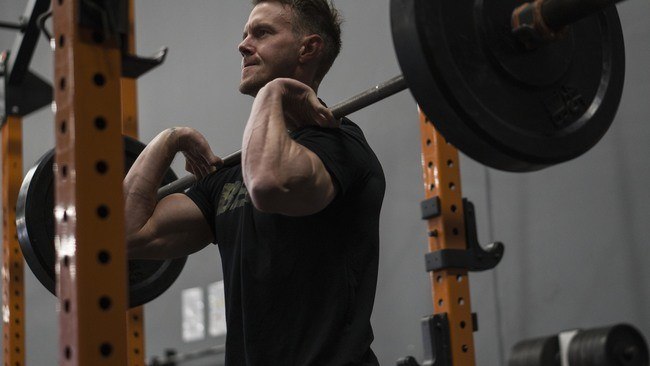
I’ve chosen the front squat over the standard squat where the bar is behind the head for the simple reason that it places a greater load on the quads. It’s also quite a bit more challenging than the standard form squat, which I like because it forces you to be very aware of the technique and the muscles being worked.
Step up to the bar with your arms stretched out in front of you, a little wider than shoulder width (palms facing downwards). With your fingertips on the bar, walk forwards to the bar as you drive your elbows under, bringing your wrists upwards so that your palms are facing to you. The barbell is resting across the front of your shoulders with your arm position (upper arms being more or less parallel to the floor) keeping the bar fixed in place. This does require a fair amount of flexibility at the wrist, which if you don’t have, or it’s too uncomfortable, then you can cross your hands (palms facing down) over the bar so that each hand is over the opposite shoulder and the upper arms are lifted up parallel to the floor.
As you squat down, be sure to keep your back straight and chest lifted up. With the weight positioned to the front of you, it will be pulling you forward and may catch you off guard if you’re not focusing on your technique. By ensuring that your chest is lifted up and the elbows remain high, you’ll keep the bar from rolling forwards. Just be aware of your back and keep this straight. This workout is more about volume than outright weight, so opt for a lighter weight and really feel the muscles working rather than trying to break any personal bests for this lift.
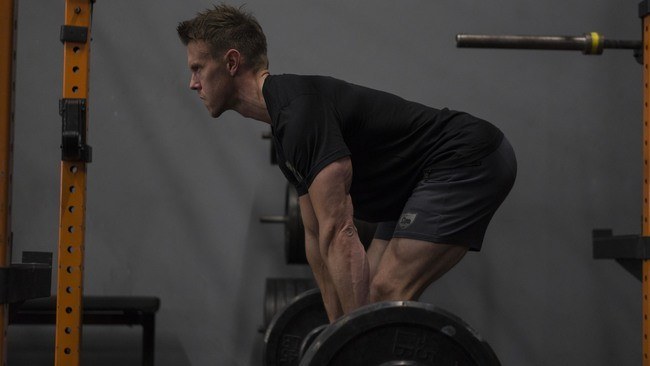
Immediately after you’ve completed a set of front squats, perform a set of stiff-legged deadlifts. If possible, I would have a separate barbell already set up next to you, but if not, you can use dumbbells instead of using the same barbell that you used for front squats.
The key to really feeling the hamstrings work within this movement is to keep a slight bend at the knee and when lowering the barbell down (to only a few inches below the knee line, and keeping the arms parallel to the shins) push your hips back as though you’re about to sit onto a chair. This will ensure the hamstrings are being lengthened against the lowering of the barbell.
When pulling the bar back up, remember that it’s not your arms that is pulling the weight but the erection of the upper torso, which is done through the hamstrings contracting (shortening). Focus on driving your hips forwards as you raise your torso upwards. I find it helps to be consciously thinking about engaging your hamstrings and not trying to pull with the arms.
At the top of the rep, ensure that your shoulders are pulled back and the barbell is up against the top of your thighs, but the legs are not full locked out. Your knees should still be slightly soft with your hamstring muscles fully tensed.
Superset #2: Sled Pushes & Box Step Ups
3 sets of sled runs (60 yards or about 20 steps) with 16 reps of step-ups.
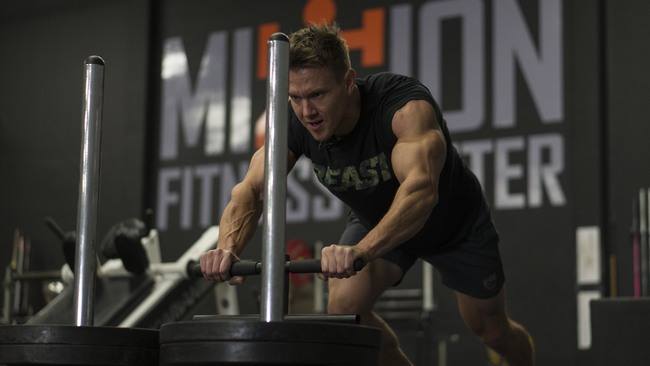
I’ll admit that sled pushes are not a normal component of my routine, which is exactly why I’m including it within this program – to shock my system. It’s not so much about the amount of weight that I’m moving, but more so that it forces me to use my legs in a different way than they’re worked during a static exercise (such as the previous two), followed immediately by the next movement: box step ups, which will again, work my legs in a very different manner.
If you have access to a sled, don’t aim to push too much weight in which you’re unable to build up any sort of speed when pushing it. You want to be able to get long leg strides, working the legs through their full range of motion. Keep your body down low (like a sprinter does when leaving the starting blocks of a race), and when you’re pushing the weight, focus on driving through your legs with the ball of your feet pushed the ground and the heel lifted up.
If you don’t have access to a sled, you could substitute this exercise for a 20 second sprint on an incline treadmill before moving onto the next exercise.
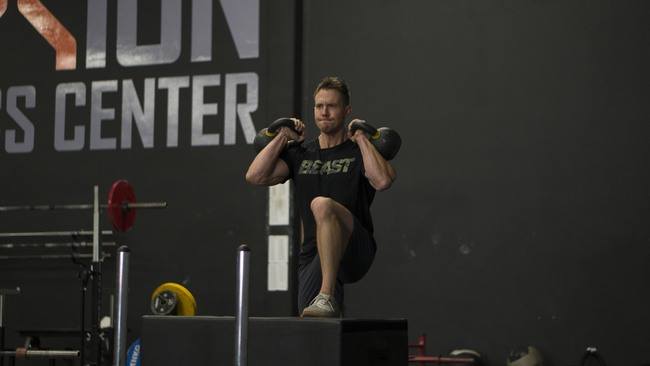
Box step-ups are the next movement in this superset combo, and I’ve purposely chosen a height to step up that requires my knee to be higher than my hip when my foot is positioned at the top of the platform. This forces my quads to work that much harder then if my knee was the same height, or lower than my hip.
I’ve also opted for kettlebells as my resistance, keeping the weight once again to the front of my body and thus forcing the quads to work harder (although even just bodyweight alone will be enough for you depending on your strength and ability to recover from the previous movement). Dumbbells will also work, although you may prefer to hold a single dumbbell at both ends (width ways), in front of your chest so as to keep the weight to the front of your body.
Similarly to the front squats, you’ll need to ensure that your back is kept straight as you stand up, and not causing you to arch forward. If you find this to be the case, you can use a barbell placed across the back of your shoulders to help with better weight distribution.
As far as repetitions go for each leg, I prefer to alternate each leg so that my right leg steps up first – allowing me to stand tall on the platform and really contract the quad hard without locking out my leg completely, as the left foot follows and touches down on the top of the platform, and is also the first to touch back down on the floor (forcing my right leg to raise me up on to the platform and lower me down), and then I repeat with my left leg stepping up first and lowering me back down. That is two repetitions, which I complete for a total of 8-10 reps on each leg.
Superset #3: Nordic Hamstring Curl & Short Step Lunges
3 sets of 12 reps (NHC) and 30-40 steps for short step lunges
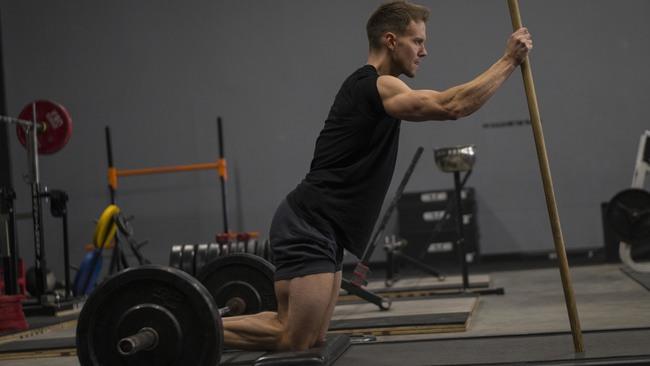
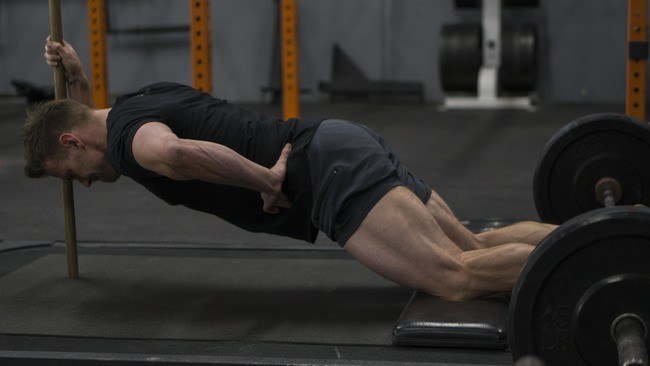
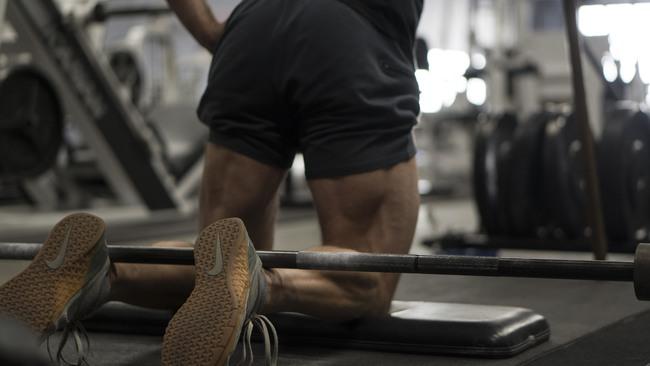
The Nordic ham curl (sometimes called the poor man’s glute-ham raise – aka GHR) is great for hamstring hypertrophy, increasing eccentric strength, and can help reduce the risk of hamstring injury – partly because it lengthens the hamstring itself.
Like the GHR, they’re both bodyweight knee flexion movements that hammer the hamstrings. The difference is that the glute-ham raise uses a device that puts the body in an optimal position that allows a more effective range of motion.
It’s a “functional” exercise; it helps you run quickly and safely, which is a pretty natural movement. It’s also great for hypertrophy if you’re interested in building your physique and it’s good for people who just want their muscles to be strong. The Nordic ham curl is improving eccentric strength, which means you shouldn’t drop straight down to the ground from kneeling.
You also don’t want to bend too much at the hips; you can lean forward a little, but try to keep the hips fairly neutral. I like to keep my feet in dorsiflexion (toes pointed down, not back), which helps the calf to contribute to knee flexion torque.
You should really focus on trying to get your all out of the lowering portion (the eccentric phase). If you’re training for hamstring injury prevention, don’t even perform the concentric phase. If you’re unable to control the lowering portion then try supporting yourself with a resistance band suspended from a power rack.
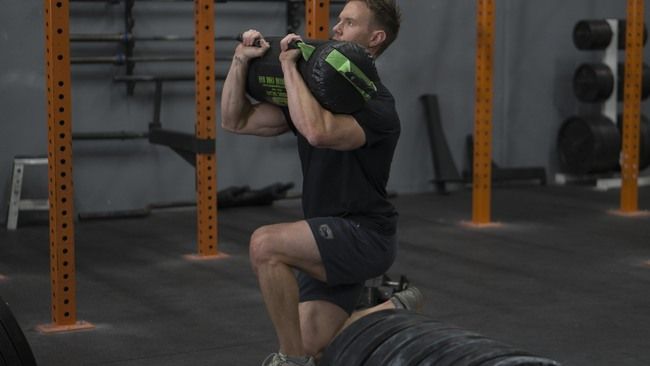
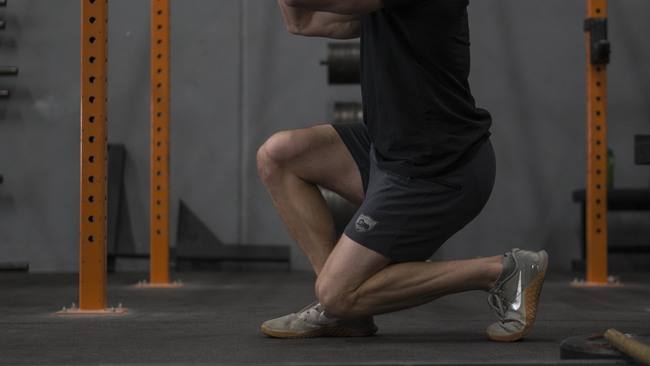
The final exercise within this workout is another traveling movement, and one that directly works all the muscles in the legs rather than isolating one over the other. With the last movement focusing on the hamstrings, I wanted this movement to focus more on the quads, so by shortening the step length (to about half of a typical lunge stride), you can change the emphasis of the exercise to be much more quad dominant.
I’m also using a weighted sand bag for added resistance, held in much the same way as the front squat (palms positioned upwards and upper arms raised parallel to the floor), as this keeps the weight positioned to the front of me and forces the quads to work harder than if the weight was positioned further back. Just be conscious again about keeping the back straight and chest and upper arms lifted upwards.
If you don’t have a sandbag to use, I’d suggest either using 2 kettlebells, or holding a dumbbell horizontally at each end up by your chest. If this is too uncomfortable, then opt for a barbell across your shoulders behind the head, or hold a dumbbell in each hand with your arms hanging at the side of you.
You can see from the second image shown above that my step is much shorter than a standard lunge where usually both knees are bent at a 90-degree angle and my hips and shoulders are stacked directly in the center of the step. My step is about half as short, which means my front knee is now directly over the front toe, and my back leg (knee) is now directly next to my front ankle. This shorter step and tighter angle at both knees really makes it a great quad-based movement, and a great compliment to the Nordic hamstring curl before that.